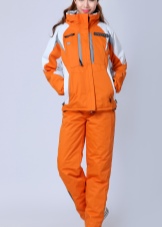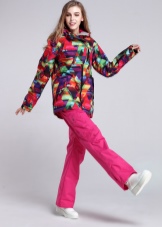Active rest is hard, persistent, but very exciting and emotional work. Experienced tourists know exactly what is necessary for it to take place and succeed: the desire to “conquer” new peaks (sports), basic knowledge and a good teacher, the right equipment. After all, equipment can bring the extreme to the most inopportune moment, which, in turn, can lead to unpredictable consequences.


Speaking of skiing, I want to pay special attention to boots. Properly selected, they will achieve the best results and maximum pleasure in amateur jogging.



Types of ski boots
Comfortable shoes for any tourist are a guarantee of a comfortable and healthy outdoor activity. And when you approach the choice of this accessory from a professional point of view, any troubles or problems seem just a trifle.

Ski boots are a whole art. Their model diversity is not limited only to men, women and children.
There is a distinction between ski boots depending on their purpose:
-
For walks and simple trips. Ideal for beginners, for those who like skiing in the park or forest. Usually, these are one of the simplest and most inexpensive models; their price can increase due to internal insulation and external material.
-
For the classic move. Low, provide easy freedom of the ankle joint, without restricting its movement, equipped with a soft sole.
-
For skating. High boots with a cuff, firmly fix the shin, have a hard sole and are designed for professional ski training.
-
Combined models have a removable upper cuff, so they are suitable for the second and third types of skiing. Sole - medium hardness. Confidently used by beginners and amateurs



Female, children's and male models differ not only in the color scheme and additional decorations, but also in their device, depending on the physiological characteristics of the feet of a particular group. Ski boots should not only be beautiful and fit well, but also meet certain parameters.




How to choose ski boots?
Even if the best skis in the world are gathering dust in your closet, they will not come in handy without special miracle boots designed specifically for this sports equipment. With the right selection, skillful operation and quality care, your ski boots (even not the most expensive ones) will last at least 10 years, experts say.

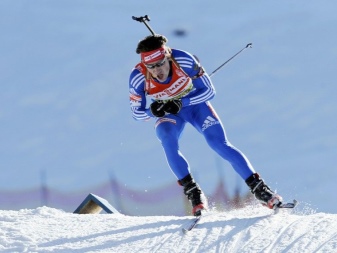
In order to make the right choice, professionals are advised to adhere to the principles and recommendations, even if you are just an amateur and are not going to go skiing for the rest of your days.


To size
Ski boots should correspond to physiological features of the foot and be fit for you. If at least for a second you have doubts about convenience, immediately refuse to purchase.
If the shoes are large, then the risk of getting injured in the leg increases, since it will not be securely and firmly fixed. Too small will bring a lot of discomfort and, as a result, "poor-quality" riding.



Especially professionals insist on the rejection of grandmother's knitted woolen socks. The maximum that you can afford is thin knitted or cotton. Accordingly, when trying on, you should be in those socks (or the like) in which you will plow the expanses of snowy hills.


Just like when choosing casual shoes, it is best to test your ski boots right in the store. Shoe them and walk like literally 1-2 minutes. This time is enough to feel uncomfortable or evaluate the exact hit on the target.


Stiffness
For skating, the boots should be as stiff as possible in the shin area. This is necessary for a snug fit to the leg and a secure fit. Their top is usually made of hard frost-resistant material with a polyurethane coating.



Determine the necessary stiffness in the store is not difficult. To do this, you need to bend the upper part of the boot forward as much as possible. If it does not succumb to your provocations, then rigidity is just for the ridge.


By type of fixtures
The most common ski boot mounts are four types:
-
NN 75 - has been used less and less recently. A metal horseshoe case with three rods on which a boot with a protruding sole is mounted. Then this part is fixed with a metal bracket and latches. This type of fastening is almost never used in the ridge, as the shoes are very unreliably fixed on the ski.
-
NNN is a ski mount. It is a rectangular metal plate with two transverse guides. The boot is fixed tightly, its front part abuts against the rubber stop.
-
NIS - this type of mount is practically no different from the previous one. Since this view is attached to skis using a special NIS platform, no screws or rods are used here.
-
SNS is a special mount made for cross-country skiing. The boots are attached with the help of a longitudinal guide, the toe fits snugly against the rubber stop.


Running style
Depending on what kind of skiing you plan to go in for, the type of boots, the bindings and even their size depend.


Skating is considered a semi-professional and professional type of cross-country skiing. If you have just started skiing, then most likely your first steps will be of a classic character. Hence, the types of ski boots differ in their main characteristics:
-
Higher - for skating, with ankle fixation, and lower shoes for the classic style (no need to fix the joint);
-
The professional ski boot sits on the foot more densely and has a compacted sole. The classics are not so demanding and are content with a softer sole and have light weight;
-
For both types of skiing, the most popular and used mounts - SNS and NNN - are equally suitable. But here it is already necessary to build on the type of fastening on the skis themselves.











Female and child models
The principles for selecting this category of ski boots are not much different from all of the above. Some manufacturers make minor adjustments to ski shoes for women and children. For example, shoes for lovely ladies are made slightly lower than men's shoes and slightly less rigid. Due to the anatomical features of the female legs, injuries are not more frequent.

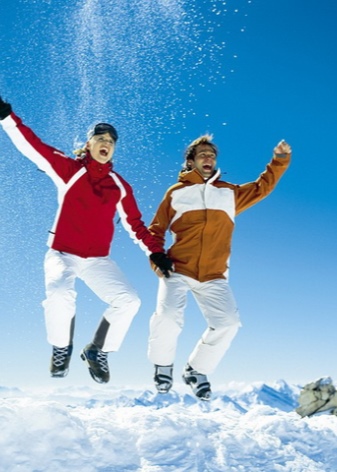
Women's skate shoes usually make a little wider in the calf muscle or insert special cuff volume regulators. For greater convenience, women make a raised heel.
When choosing children's ski boots should be as careful and attentive as possible. Due to active growth, the size of the legs in children can increase by the hour and not by day. Therefore, the main thing is to ensure that you pick up sports ski shoes on the foot of your baby in time. Just like women's models, children's shoes have reduced stiffness and are not as high as adults. You need to choose shoes with your child so that he can take several steps in it and make sure that it really suits him.


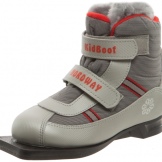

There are some valuable tips from skiing professionals that warn parents of future athletes against an adverse purchase. After all, the wrong shoes can not only discourage the start or continue classes, but also lead to injuries:
-
To purchase ski boots even for the smallest skiers, you need only size in size. There should not be any "growth" options. These are not boots or boots that can be worn for several seasons in a row. The health of your baby’s legs directly depends on the size of the ski boots.
-
Be sure to consider the purpose of the shoe: for classic or skating.
-
If parents have a desire to kill two birds with one stone (what if he rides a classic and then wants to skate?), It is recommended to purchase special combined models with a removable cuff.
-
It is strongly recommended that you purchase your ski boots with suitable bindings.





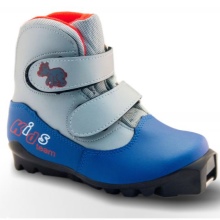
Pricing policies for sports brands
Of course, the prices of ski boot models from popular brands may seem unattainable for buyers in the economy category. However, their quality, convenience and reliability are worth the money. For example, sports brands such as Alpina, Solomon and Madshus offer at least 4,500 rubles for a pair of boots. Spine and Nordway set the lower bar at the level of 2500-3000 rubles.


The difference between expensive ski shoes and cheap ones is the use of better, natural materials, an individual approach to each individual model, and more pronounced frost and moisture resistance.
When choosing ski boots, you should remember that saving time and money on equipment, you can expose yourself to unpleasant unforeseen consequences, both in terms of injury and in terms of complete abandonment of the plan.
